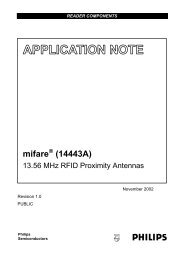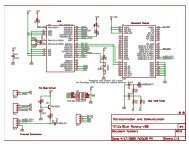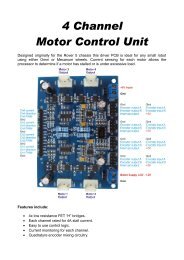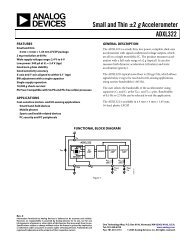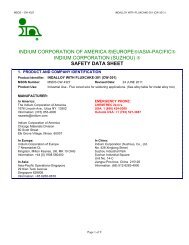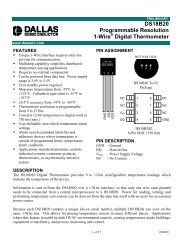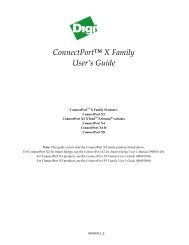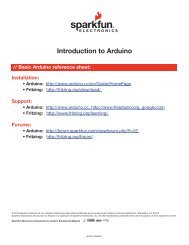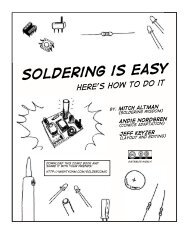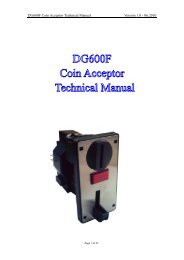SanDisk SD Card
SanDisk SD Card
SanDisk SD Card
Create successful ePaper yourself
Turn your PDF publications into a flip-book with our unique Google optimized e-Paper software.
Revision 2.2Chapter 4 – <strong>SD</strong> <strong>Card</strong> Protocol Description<strong>SanDisk</strong> <strong>SD</strong> <strong>Card</strong> Product ManualStop Transmission Received after Last Data Block—<strong>Card</strong> Busy ProgrammingCMDDATHost CommandN CRCycles<strong>Card</strong> ResponseHost CommandS T Content CRC E Z Z P *** P S T Content CRC ES T Content<strong>Card</strong> is ProgrammingS L ******************************************************************L E Z Z Z Z Z Z ZZStop Transmission Received after Last Data Block—<strong>Card</strong> becomes BusyCMDS THost CommandN CRCycles<strong>Card</strong> ResponseContent CRC E Z Z P *** P S T Content CRCEHost CommandS T ContentDAT<strong>Card</strong> is ProgrammingZ Z Z Z Z Z Z Z Z Z Z S L ********************* LE Z ZZZZZZZErase, Set and Clear Write Protect TimingThe host must first tag the start (CMD32) and end (CMD33) addresses of the range to beerased. The erase command (CMD38), once issued, will erase all the selected write blocks.Similarly, set and clear write protect commands start a programming operation as well. Thecard will signal “busy” (by pulling the DAT line low) for the duration of the erase orprogramming operation. The bus transaction timings are the same as given for stop trancommand in the “Stop Transmission Received after Last Data Block—<strong>Card</strong> BusyProgramming” diagram above.Re-selecting a Busy <strong>Card</strong>When a busy card, which is currently in the dis state, is reselected it will reinstate its busysignaling on the data line. The timing diagram for this command/response/busy transactionis the same as given for stop tran command in the “Stop Transmission Received after LastData Block—<strong>Card</strong> becomes Busy” diagram above.4.13 Timing ValuesTable 4-24 defines all timing values.Table 4-24Timing ValuesValue Min. Max. UnitN CR 2 64 Clock cyclesN ID 5 5 Clock cyclesN AC 2 See Note Clock cyclesN RC 8 --- Clock cyclesN CC 8 --- Clock cyclesN WR 2 --- Clock cyclesNote—The host calculates the maximum read access time as follows:N AC (max)= 100 ((TAAC * f PP ) + (100 * NSAC)) ;f PP is the interface clock rate and TAAC & NSAC are given in the C<strong>SD</strong> Register.© 2004 <strong>SanDisk</strong> Corporation 4-46 12/08/04



